Table of Contents
- Over 85% of guest post sites are low-quality, with poor traffic and DR, yet still command premium prices.
- High-quality guest posts (DR 71+ & 50K+ traffic) make up just 4.6% of the marketplace.
- Average guest post costs $365—but quality posts range $692–$957 before vendor markup.
- The average cost of a guest post through a vendor is $1,459.06.
- Pricing jumps steeply by quality tier; Top-Tier links top at $10,000 through vendors.
- Relevance still trumps metrics—high DR means little without contextual topical alignment.
- Digital PR offers better ROI, long-term value, and resilience in AI-driven search updates.
Just over a year ago, Google’s Helpful Content Update torched most of the guest posting sites I had been tracking. Like many SEOs, I assumed guest posting was finally dead.
But here’s the twist: it’s not only not dead…it’s trending?
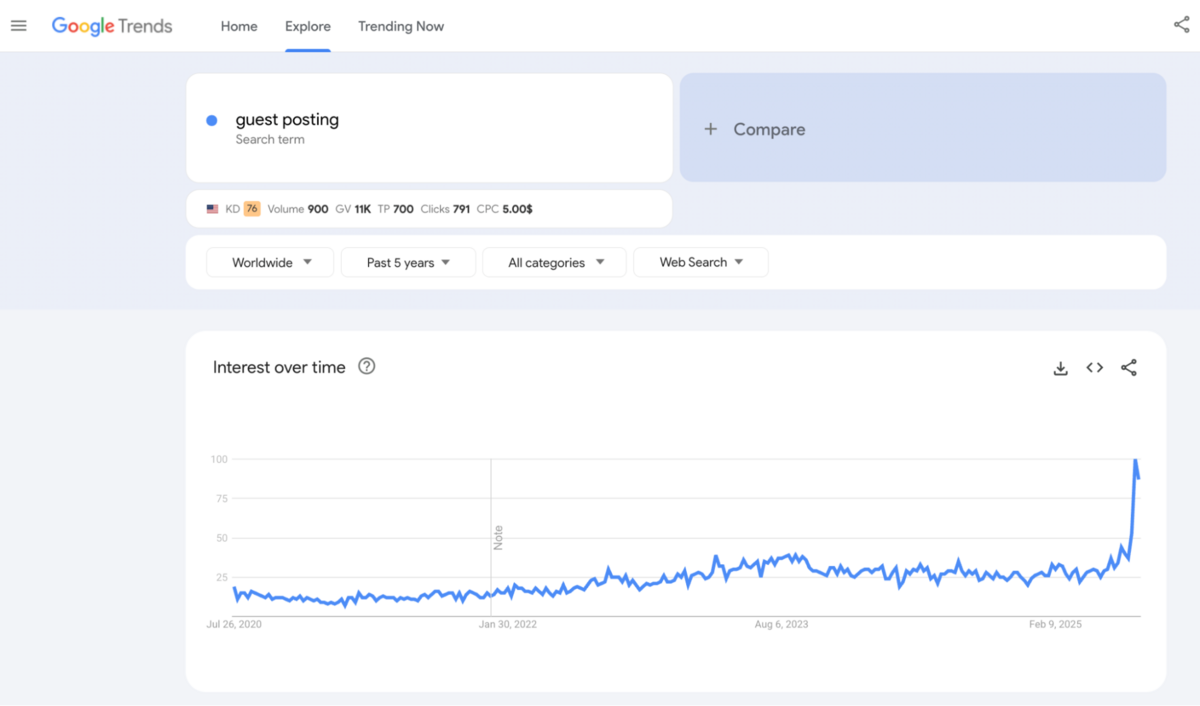
The reality is that while most link builders are turning to digital PR, many still rely on guest posting.
uSERP’s State of Backlinks 2025 report found that 12% of SEOs considered it the most effective approach, trailing behind digital PR’s 20%.
The term, however, is a far cry from what it once meant.
Now, for the most part, guest posting has become a paid strategy where a vendor writes and places links within an article on a site with which they have built partnerships. (I wrote a bit about it in my guest blogging post.)
In my original link building pricing research in 2024, I gathered a few thousand price points via shared guest post spreadsheets and found that what was being sold was about 90% low-quality, high-priced junk.
(And by low quality, I mean sites with weak traffic, low DR, or both—but more on that below.)
So today, I decided to conduct extensive research on guest posting on a much larger scale than I had before to see if this was still the case.
The Data Source: A Massive Marketplace of 26,000+ Sites
This time, I decided to take a different approach to gather my data and discovered a massive link marketplace database of 26,632 sites.
After consulting with other well-respected SEOs, the database in question appears to be the source of many other resellers.
I’m not going to reveal who it is, nor do I think it’s essential, as most of the placements that you find carry the telltale signs of buying links: exact match keywords, low-quality content, etc.
So, what does this 26,000-site marketplace tell us about guest posting in 2025?
How Good Are Guest Post Sites, Really?
The first thing I want to understand is the quality of guest posting sites.
We can assess quality in a few different ways, but I always like to start with traffic.
Most Sites Have Low to No Organic Traffic
The traffic breakdown is estimated monthly organic traffic as reported by Ahrefs.
As you can see, just under 41% falls in the 1.1k-10k traffic range.
More surprisingly, about 19% fall within the 0-100 range, with 11.36% of the sites receiving no traffic.
If I dive into the organic traffic patterns, I can gain a deeper understanding of what is going on:
Most of these 0-100 sites were either hit hard by Google’s Helpful Content Update, or weren’t good sites to begin with. (And yet, as we’ll see, they still charge top dollar for these sites.)
But traffic is not the only way to determine quality.
I evaluated the list using Ahref’s Domain Rating (DR) next.
DR Isn’t Enough—Most Sites Sit Below 60
DR is cited as the number one metric used by link builders and digital PRs in our State of Digital PR study and Editorial.link’s State of Link Building study, so I feel safe to report using this metric.
As you can see, most clump between DR 20-59, with the most in the 30-39 range.
At this point, the average guest post site has a DR of 45.4 and 89,544 monthly visitors.
However, I want to drill down the quality a bit more, inspired by Ahrefs’ Best Links filter found in their Site Explorer.
Only 4.6% of Sites Are Truly High Quality
With Ahrefs’ Best Links, you can filter links by both traffic AND DR, which isn’t an exact science by any means, but can get you closer directionally.
The way I originally did my guest posting sites study was that a high-quality site had both DR 65+ and 20K+ monthly organic traffic.
With that breakdown, we see that just 8.2% of sites are high quality.
For this study, I decided to expand on that a bit.
Everyone seems interested in acquiring top-tier links (i.e., news publications) these days, in the hope of gaining entry into AI, so I wanted to break out top-tier links into their quality categories.
I also wanted to give a mid-tier option.
Based on this, I’ve broken this down into quality using these criteria:
| Quality Bucket | Criteria (DR & Traffic Thresholds) |
|---|---|
| Top Tier | DR ≥ 81 and Traffic ≥ 100K |
| High Quality | DR 71–80 and Traffic ≥ 50K |
| Mid Quality | DR 40–70 and Traffic 10K–49K |
| Low Quality | Everything else |
With these traffic tiers in place, here is a more detailed breakdown of quality.
Wow.
Just 4.6% of all domains are High-Quality and Top-Tier combined.
More than 85% of linkable domains fall into the Low-quality tier.
Many domains that rank well in DR are still classified as Low-quality due to their low organic reach (and vice versa).
For instance, 53.1% of the DR 71+ sites fall into the Mid- and Low-quality category because they have under 50,000 monthly organic traffic.
Don’t Forget Relevance—It Still Matters More Than Metrics
Is it possible for a site to be below DR 40 and be a quality site? Sure. Perhaps it’s a new site that’s gaining popularity.
Or maybe it’s a highly relevant site.
In an earlier post about quality links, I discussed the importance of overlapping with relevance. I would argue that a highly relevant DR 35 site is better than an irrelevant top-quality site.
Unfortunately there isn’t an industry standard metric for relevancy (yet).
For now, you can gauge relevancy by comparing it to your industry.
Which Industries Dominate Guest Posting? (Spoiler: News & Media)
Most sites have several categories associated with them, but I tried to take the most relevant overall.
Below are the top 10 industries in the guest post database.
Overall, news and media makes up 20% of the inventory, followed by Business & Finance sites, then Tech & Science.
Since we’ve established quality previously, we can now examine the distribution of quality sites across various industries.
As you can see, most industries fall around the average of 85% low-quality sites, with some reaching as high as 90%.
If you’re interested in the numbers, it breaks down like this:
| Parent Industry | Top Tier (DR ≥ 81 & Traffic ≥ 100K) |
High Quality (DR 71–80 & Traffic ≥ 50K) |
Mid Quality (DR 40–70 & Traffic 10K–49K) |
Low Quality (Everything else) |
|---|---|---|---|---|
| News & Media | 135 | 454 | 1255 | 8408 |
| Tech & Science | 94 | 184 | 788 | 7215 |
| Business & Finance | 33 | 99 | 548 | 4816 |
| Entertainment & Arts | 18 | 81 | 436 | 3101 |
| Fashion & Beauty | 9 | 46 | 344 | 3085 |
| Lifestyle & Home | 7 | 17 | 141 | 1552 |
| Health & Wellness | 10 | 19 | 131 | 1551 |
| Travel | 3 | 17 | 176 | 1434 |
| Automotive | 5 | 25 | 151 | 1376 |
| Sports | 4 | 25 | 177 | 1312 |
The most Top-Tier and Quality links are in the News & Media section, but you also have the highest number of lower-quality sites to wade through.
Again, keep in mind that these are the top 10 categories, not the entire database.
Now that we have the overall view, let’s dive into the pricing breakdowns.
Let’s Talk Price: How Much Do Guest Posts Actually Cost?
Before we delve into answering the burning question of how much it costs for a guest post, I would like to explain the pricing briefly.
Since this is coming from vendors, there is markup involved, and every vendor is different.
For this study, I’m assuming that the database I pulled from marks up the price by at least 75%.
With that in mind, here are some answers to your burning questions.
The Average Cost of a Guest Post in 2025: $365 (If You’re Lucky)
The average estimated guest post cost is $364.76 (before an assumed 75% markup from vendors). However, buying from a vendor brings the average cost to $1,459.06.
The average estimated cost of a quality guest post ranges from $692 – $957 (before an assumed 75% markup from vendors). Buying directly from a vendor is $1,211–$1,675.
High Quality = High Cost: Pricing by Quality Tier
Breaking down the pricing by quality helps show how pricing accelerates as you climb the quality ladder:
The bar chart illustrates the exponential price growth as quality increases.
There is a modest increase from low to mid. However, the transitions from Mid to High and High to Top are steep jumps.
But anyone who has tried to go this route knows that there are certainly industries that are harder to build links in than others.
In guest posting, it’s no different.
And so, the more complicated the industry, generally, the more expensive it is.
The following section will provide a recap of this industry breakdown.
Guest Post Prices by Industry: What’s Expensive and What’s Not
Based on our data, I wanted to examine the most expensive and the least expensive industries.
Most Expensive Industries for Guest Posting
The most expensive industries are Crypto & Blockchain at ~$516 and Real Estate & Property at ~$492, followed by News & Media at ~$417.
Least Expensive Industries for Guest Posting
When digging into the least expensive options, we find that on average, you can get a Food & Drink or Fashion & Beauty guest post for around $350.
So… is guest posting still worth it?
Key Takeaways: Guest Posting Is Pricey, Risky, and Mostly Low Value
Overall, I have identified a few key takeaways. For those of you familiar with my work, my thoughts aren’t all that different from my original analysis or my thoughts on link buying.
Buying premium links is expensive
The average cost of purchasing a guest post directly from a Top-Tier site is $957.
But most brands rarely have access to these connections, which is why you pay the vendor markup.
That brings me to my next point.
And even more expensive if you do it through a vendor
If you don’t have connections to get guest posts placed yourself, you’d be paying upwards of $2,800-$3,800 per link for a Top Tier site.
Some Top-Tier links in the database cost $10,000 each.
To put that in perspective, our State of Digital PR Report found that Most digital PRs (66.5%) operate with budgets below $10,000 per month.
So, the price of a few risky paid links can be offset by earning premium links from news sites, which also helps build legitimate brand awareness and trust.
Most links available are low quality, and still expensive
As the analysis revealed, more than 85% of the domains were identified as low-quality sites. As a reminder, this means that they are both below DR 40 and have an estimated monthly traffic of less than 10,000.
The average estimated guest post cost is $364.76, but it can be as high as $1,459.06 when buying from a vendor.
The average estimated cost of a quality guest post ranges hits $957.o8 for top-tier links before the markup, $1,675 on average if buying from a vendor.
I asked James Brockbank, Managing Director of Digitaloft what to make of all of this and he told me,
“What really stands out here is the average cost of a ‘top-tier’ link comes out at an average of $957.08.
Whilst I don’t believe that cost-per-link should ever be used as a way to measure the success of any link building activity, as its got nothing at all to do with the impact the links have on real business metrics like revenue, in this instance we can at least compare this to earning links with digital PR.
If you’re buying top-tier links at just under $1k, you’re way overpaying on what you could, in my experience.
Pay for 10 guest post links and you’ve spent just short of $10k. Put that same budget into digital PR and you’ll without a doubt earn more, higher quality, links on sites that your audience is reading and which you’d never be able to buy a guest post on.
Use PR to earn links and you’re not paying ‘per link.’ I’ve seen campaigns earn 2x, 3x or even more links than that on a similar budget.
But it’s the impact that matters the most. If you’re buying guest post links from a link vendor, that in itself is a footprint. If you can see a list of sites that sell links, so can I. And so can anyone at Google. Do we really think these link lists aren’t known to Google?
It’s one main reason why earned links come out top every time. They build your authority and reputation, and PR is a surefire way to protect your brand from the impact of algorithm updates. Obviously bought links? They might work today but there’ll come a time when you wish you’d earned them by doing things that build your brand and drive links as a byproduct of this.”
Guest Posts vs. Digital PR: What’s Worth Your Budget in 2025?
The reality is that most guest posting links are still overpriced, underperforming, and low quality.
Most of these guest post sites exist only to place links.
For instance, the site below costs $1,500 for a guest post and is DR 39.
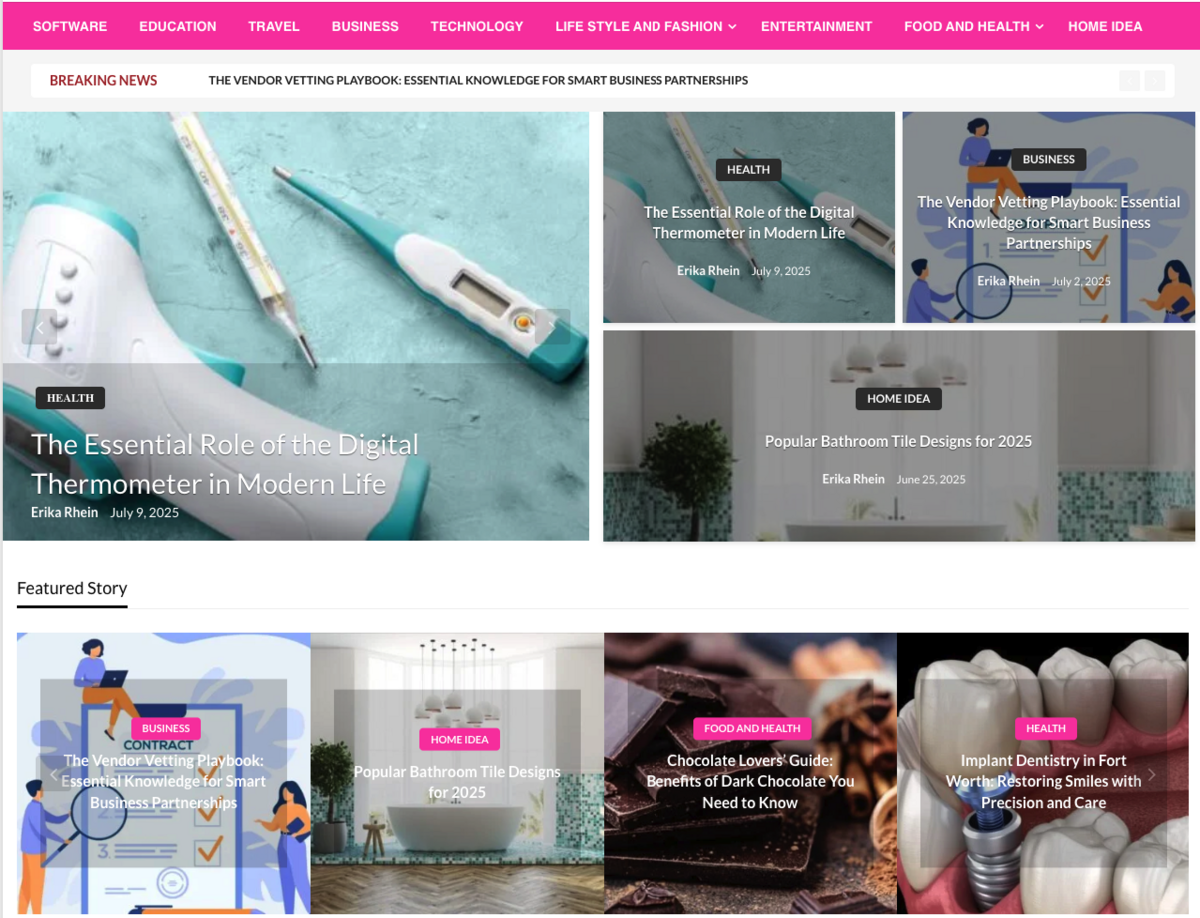
The other part of this is that Google can easily nullify all of these sites in an instant (like they did with Helpful Content Updates in the past).
The very few sites on these databases that do meet quality standards are costly and often inaccessible to the everyday brand without vendor connections.
Meanwhile, digital PR offers something that purchased guest posts never will: both credibility and long-term value.
When Google shifts the rules again (and it will), links earned through high-end news coverage are far less likely to be devalued because they are typically associated with the most trusted sites that don’t exist to simply place links.
Beth Nunnington, Founding Member & Global VP Digital PR at Journey Further, agreed:
“I’ve said for years now that buying links – even under the guise of guest posting – is risky and drives very little value. At best, Google will ignore those links, at worst it could penalize you and hurt your business. These findings don’t surprise me, but I welcome them as it helps to shine light on bad practice in our industry.
You can’t game the system, especially in an AI-driven search world. Trust and authority isn’t bought, it’s earned – by both people and machines.”
One of the things the Google leak showed us was how much Google valued links from that got engagement.
That’s why we’ve been making significant investments in digital PR (as evident in our newly released AI-enabled media list building tool, ListIQ), and we’ll continue to make those investments moving forward.

 End-to-end outreach workflow
End-to-end outreach workflow




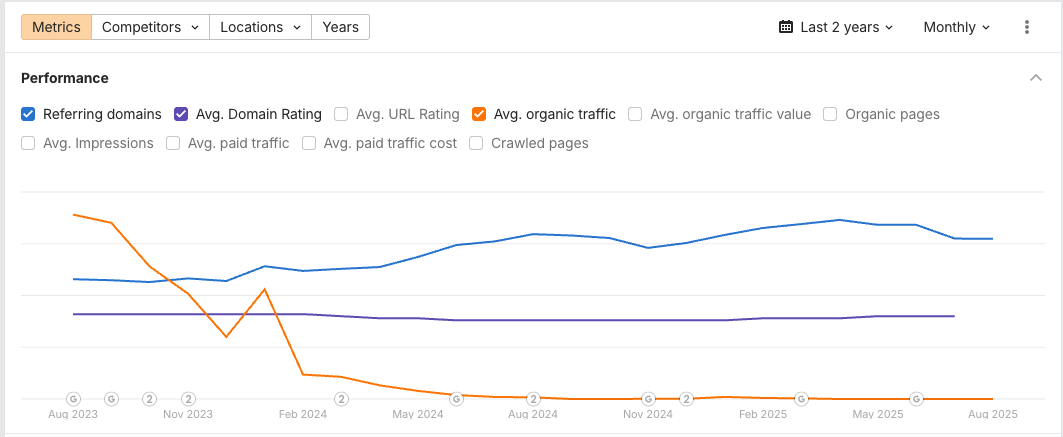
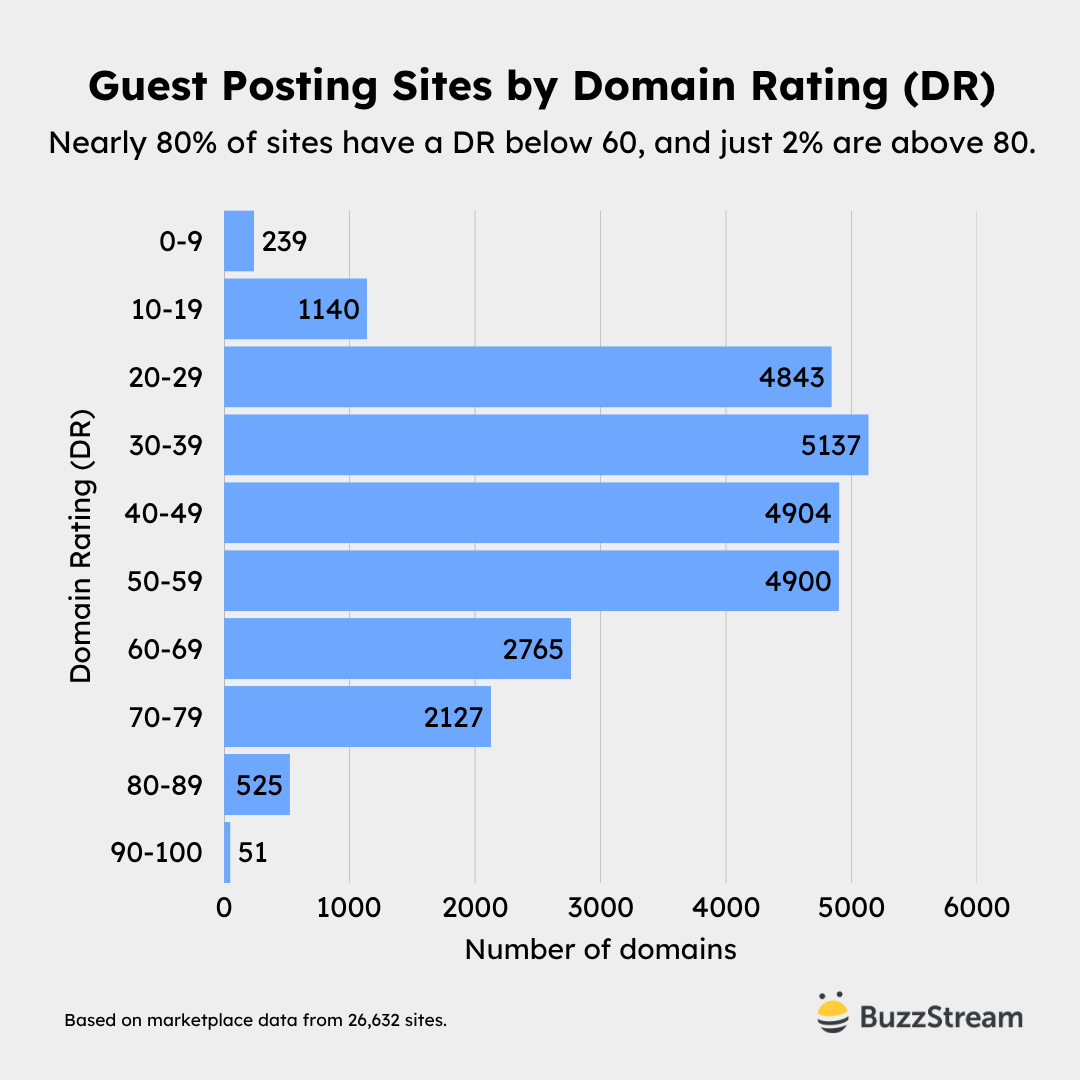
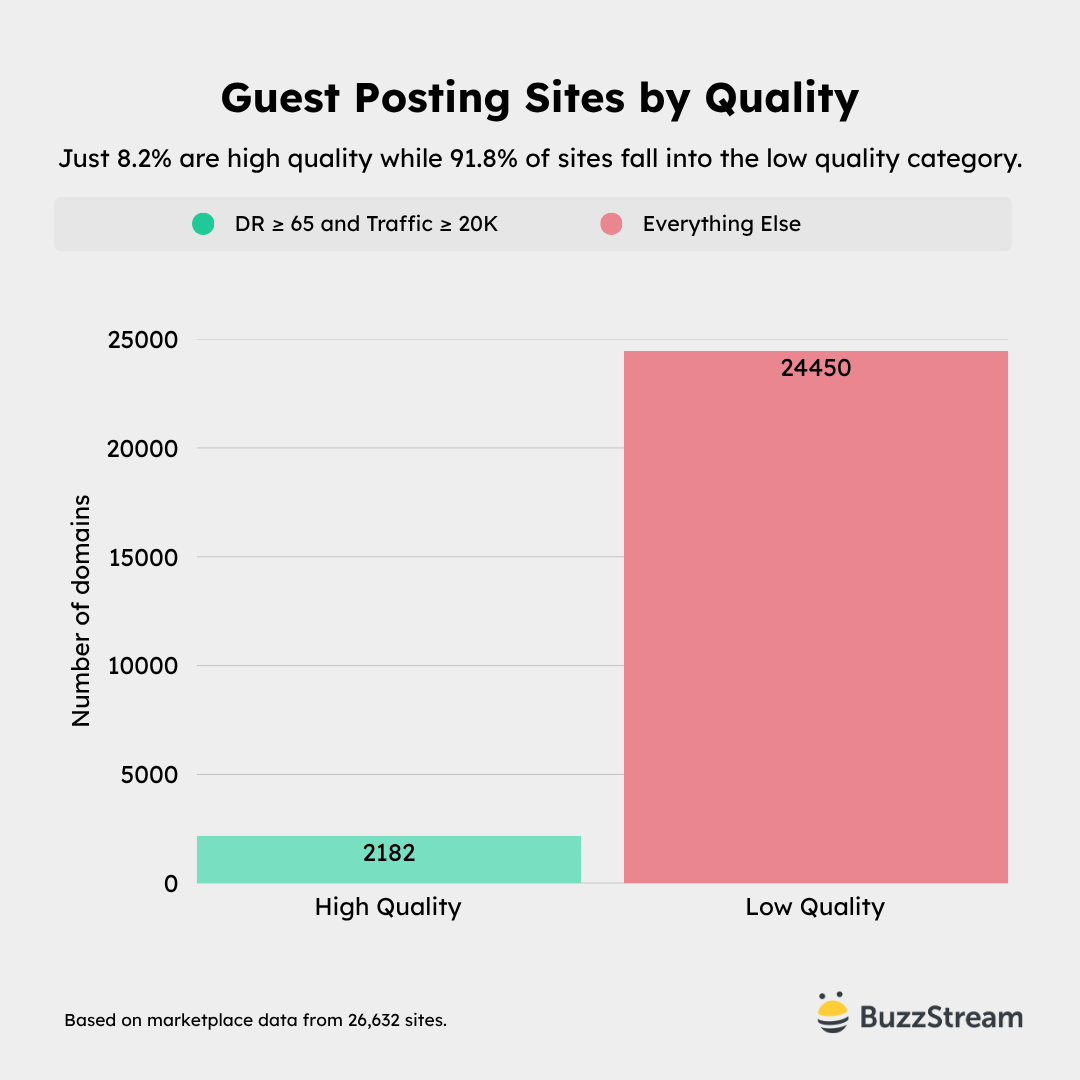
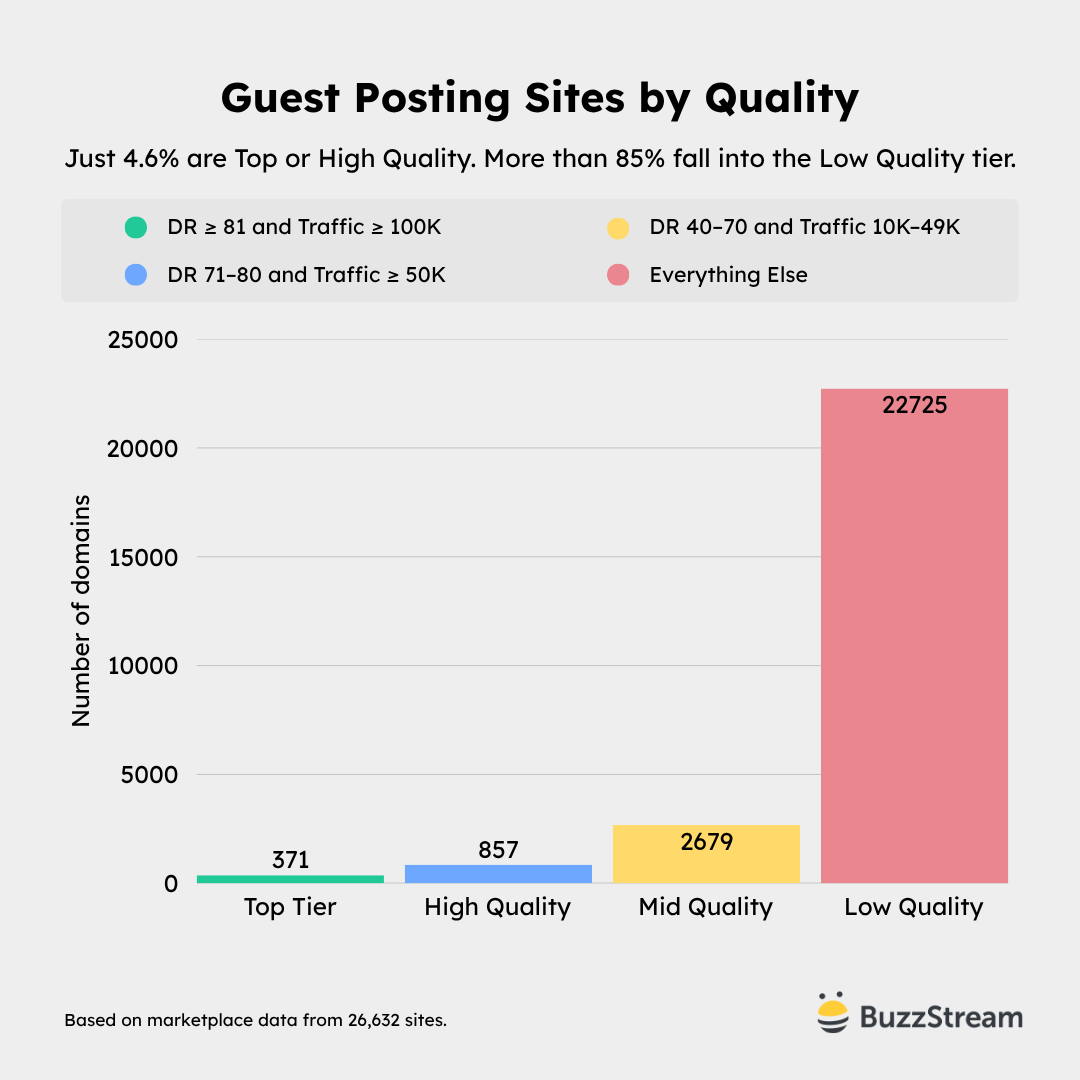
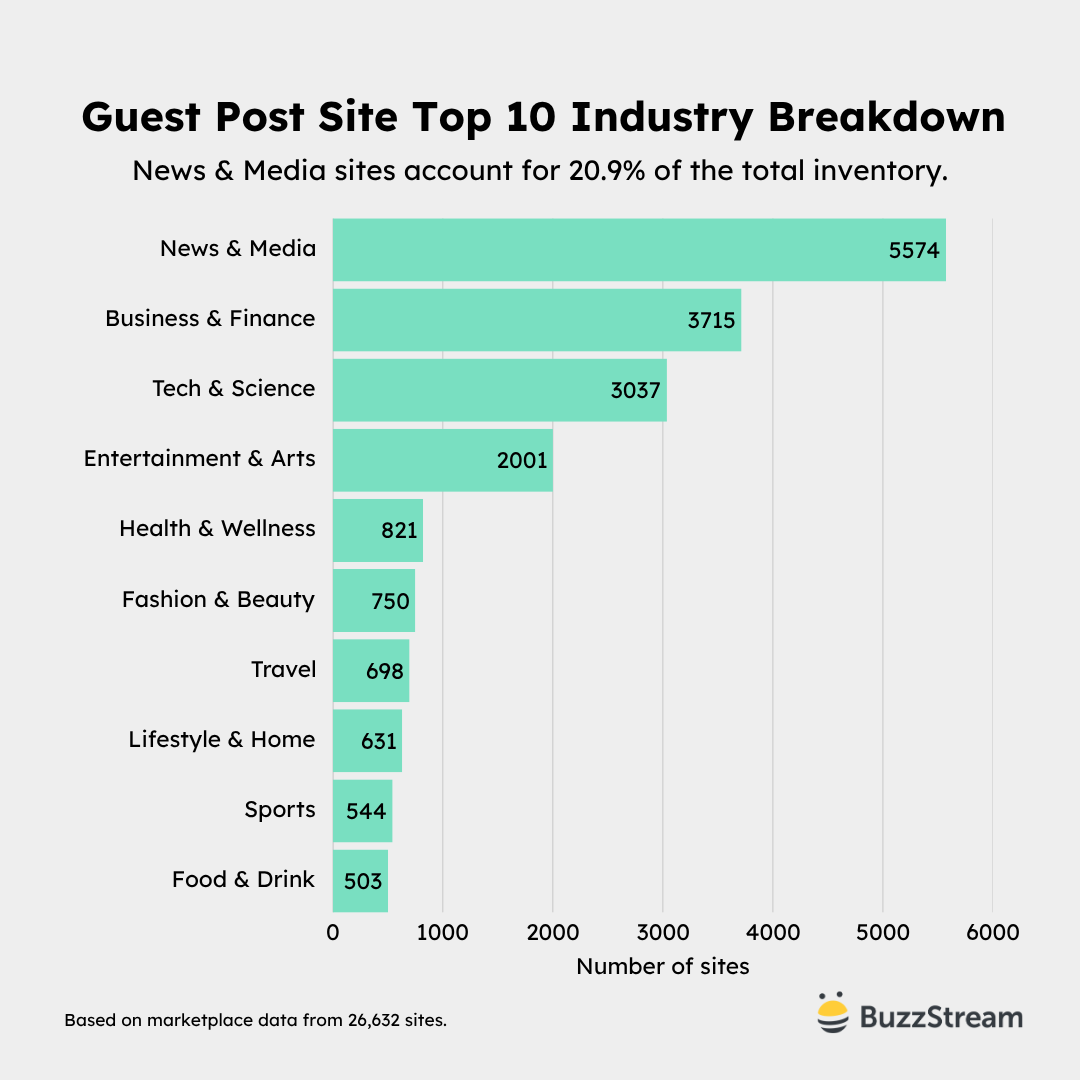
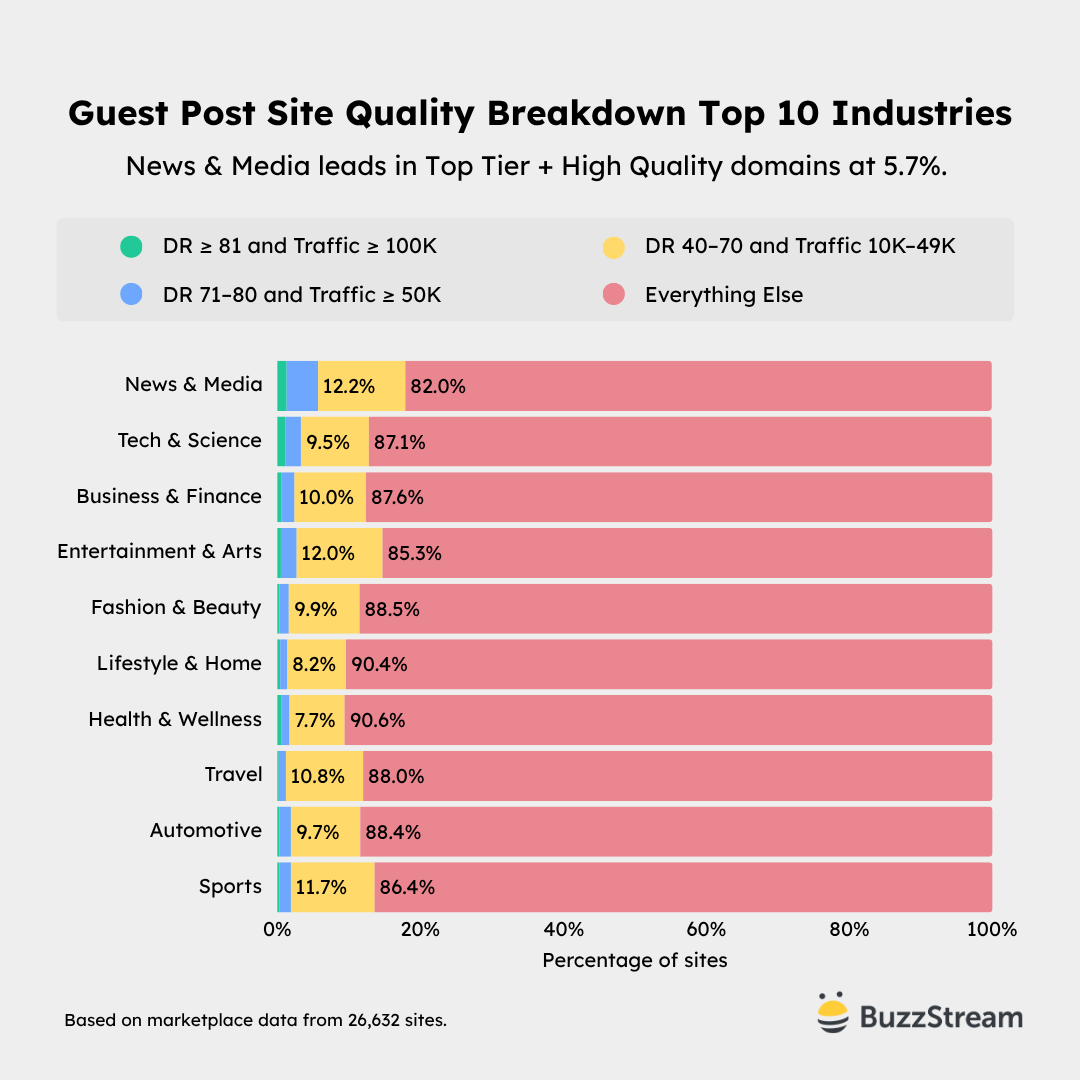
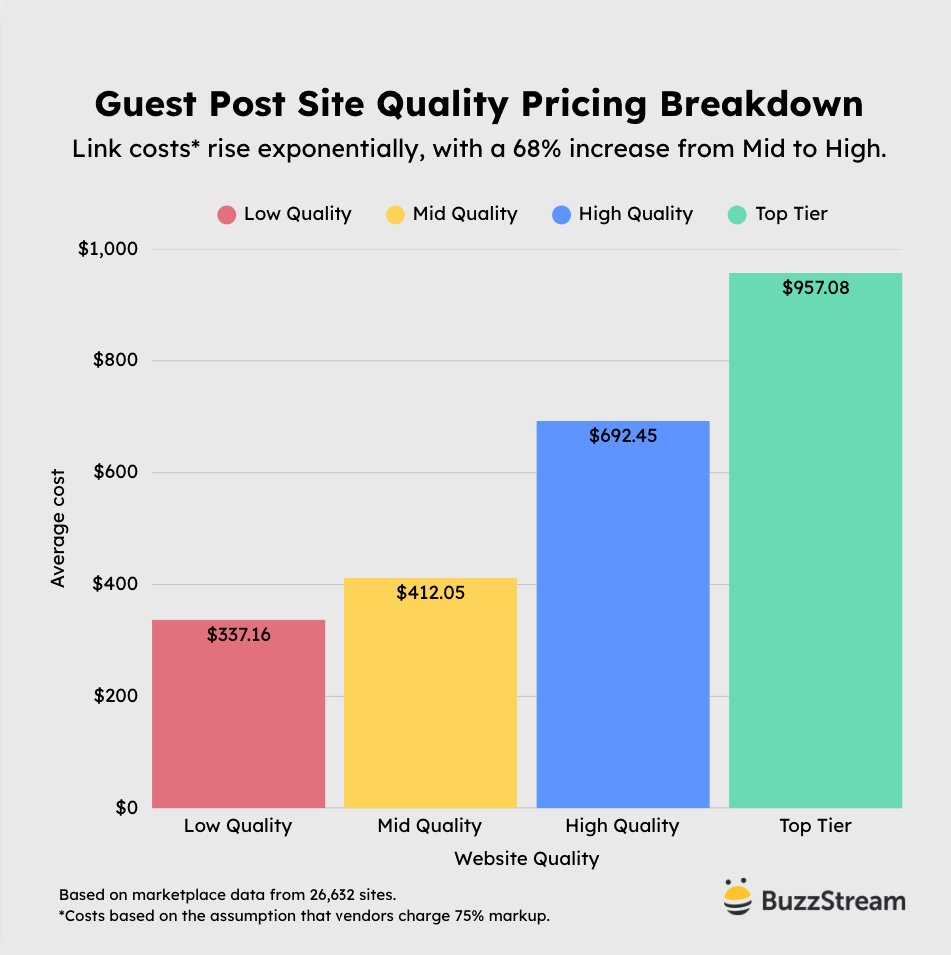
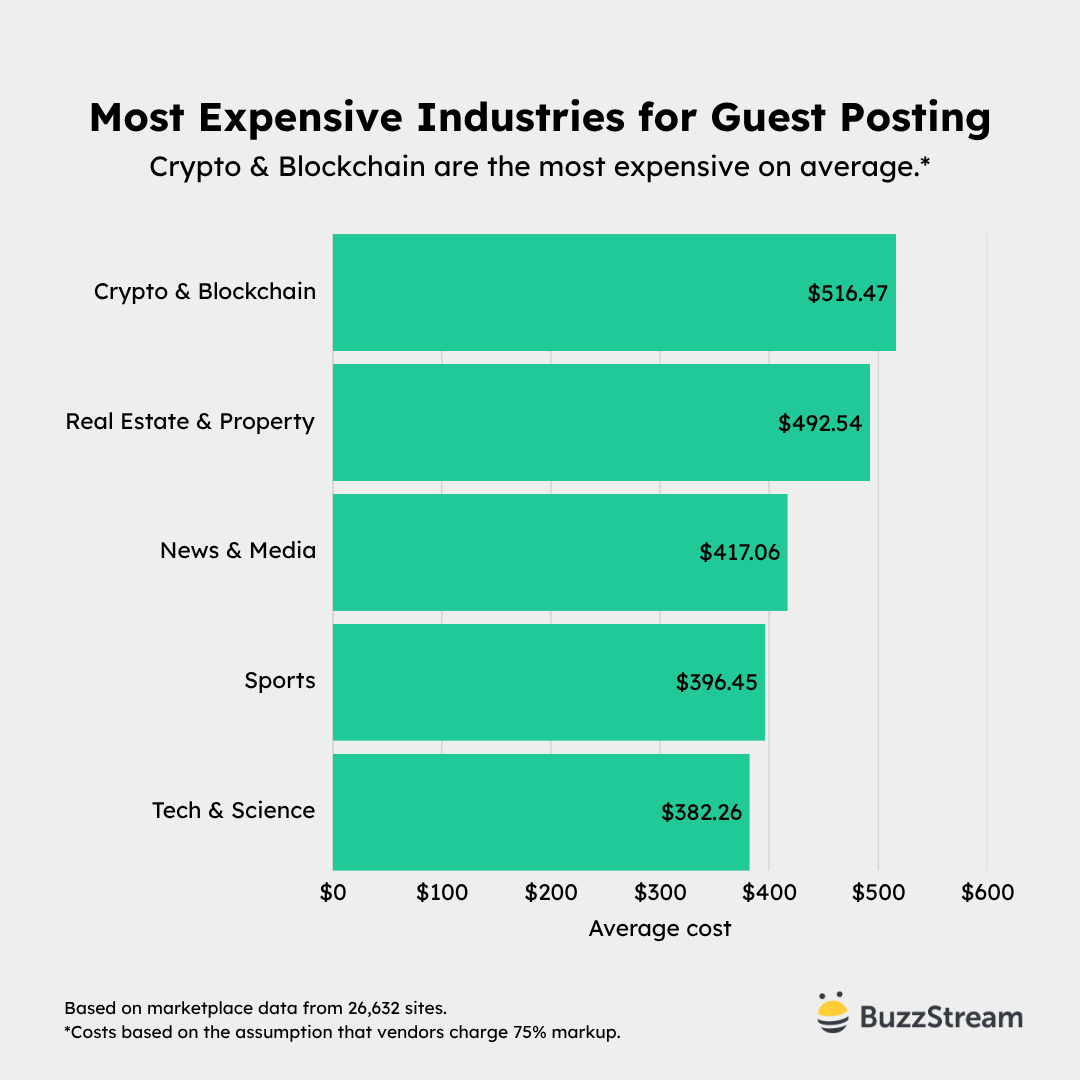
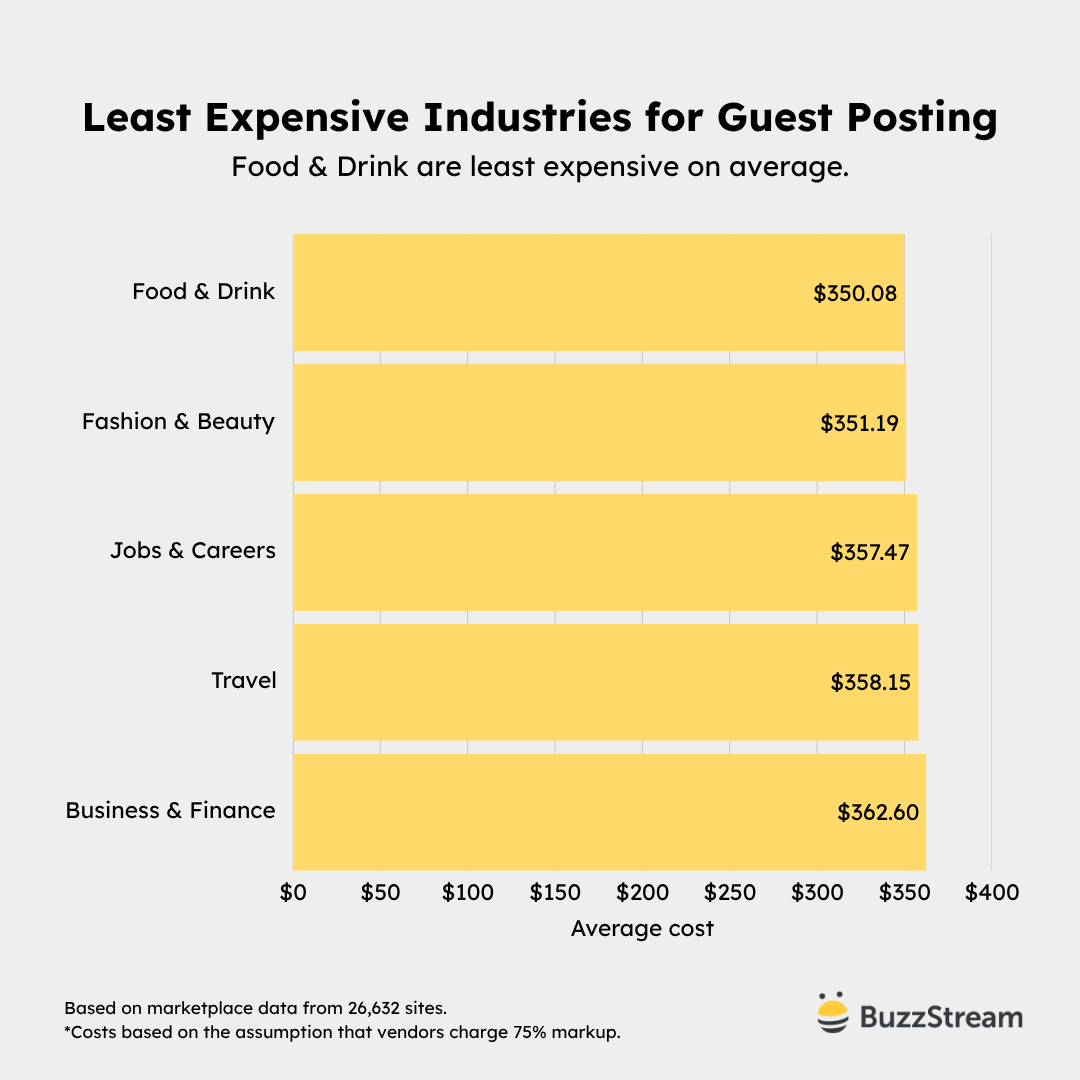
 Check out the BuzzStream Podcast
Check out the BuzzStream Podcast







